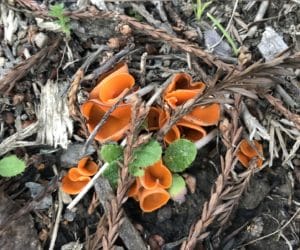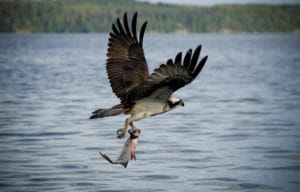Autumn is Among Us!
With the days getting shorter and temperatures getting colder, we begin to see seasonal changes on the Russian River. As the leaves begin to fall and plants enter their dormancy, we hope for water to replenish our river and the plants and wildlife that depend on it. We are hopeful of the potential for rain and moisture that our river and community needs right now more than ever. The past few years, we have seen water levels lower than ever before as climate extremes become a driving force in the imbalance of water availability. We expect to see more of this in the future as we adapt to our emerging environment.
We are hearing some good news for these upcoming Fall and Winter months. The outlook for potential wetness is above normal, but that doesn’t mean we can start wasting water now! We are still in drought for the long haul and every drop of water we receive will count toward returning to normal water reservoir levels. The recent heat waves have severely increased the potential for catastrophic fire, and we are not out of the woods yet there either.

With the welcome prospect of water, we are starting to see hints of the first mushrooms popping up along the Russian River! There are over 3,000 species of fungi in Sonoma County where more than half are edible. It is important to remember to never eat wild mushrooms without consulting expert advice. Sonoma County Mycological Association has more information on mushroom picking rules, regulation, identification and more. Here we see an early season orange peel fungus (Aleuria auratia) found along the Russian River recently near Guerneville. The increased debri breaking down on the forest floor in combination with moisture provides the perfect conditions for these beauties among others to emerge.

Another seasonal change we’ll see more of as water becomes available is the return of important fish to the Russian River. The Russian River is a Coho, Coastal Chinook Salmon and Steelhead Trout stream. Fall begins the Coho, Steelhead and Chinook run. The Chinook can begin their run as early as September and are usually the first to migrate upstream. At this time we are seeing the bulk migration that occurs from October through December. Unfortunately drought has not been friendly in recent years for fish migration, so sightings have been scarce. The Coho, Chinook and Steelhead Salmon in the Russian River are listed under both the State and the Federal Endangered Species Acts and are keystone species of the Russian River. We can infer general health of the River’s ecosystem by the presence (or lack) of these in the River in any given year. We’ll need sufficient streamflow to provide passage over shallow riffles, log jams, falls, or other obstacles in the river, and we’ll continue to advocate for minimum streamflow requirements at the legislative levels not only for the continued health of the fish, but for the benefit of the entire ecosystem.
 With greater fish levels, we can also help ensure the survival of the magnificent bird species we see on the Russian River. This Osprey did not waste any time in securing their meal as a result. Autumn is a primary migration time for Osprey! After the breeding season, they fly south for warmer temperatures as the temperatures and daylight hours drop. We’ll see them again in their Spring migration back to the northern states. We’ve also recently observed a Heron and an Egret enjoying the shallow waters in the upper Russian River near Healdsburg at our last staff River trip, and we’re happy to see them enjoying small fish and insects that the River provides.
With greater fish levels, we can also help ensure the survival of the magnificent bird species we see on the Russian River. This Osprey did not waste any time in securing their meal as a result. Autumn is a primary migration time for Osprey! After the breeding season, they fly south for warmer temperatures as the temperatures and daylight hours drop. We’ll see them again in their Spring migration back to the northern states. We’ve also recently observed a Heron and an Egret enjoying the shallow waters in the upper Russian River near Healdsburg at our last staff River trip, and we’re happy to see them enjoying small fish and insects that the River provides.
Have you seen any seasonal changes in the plants and animals along the Russian River yet this year? We encourage you to share with us on social media as we celebrate and welcome of Fall and the rainy season!
